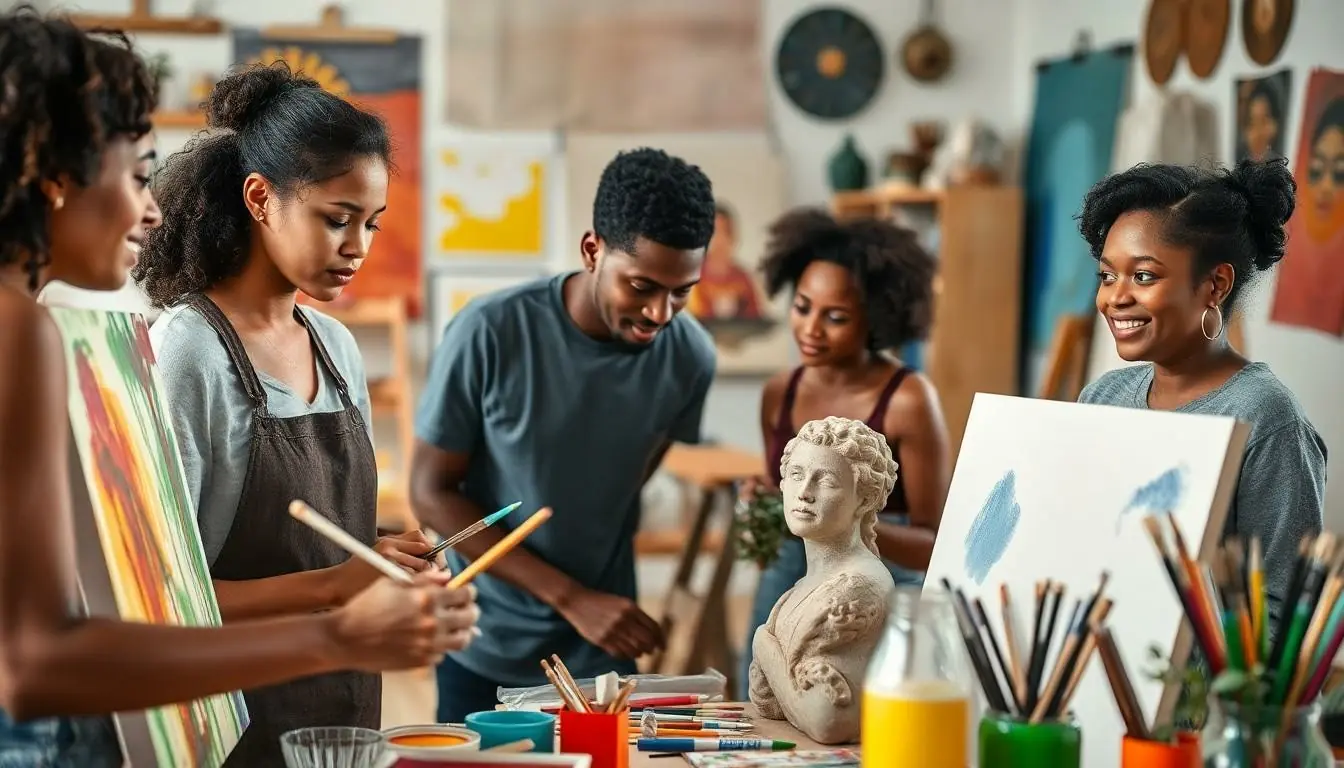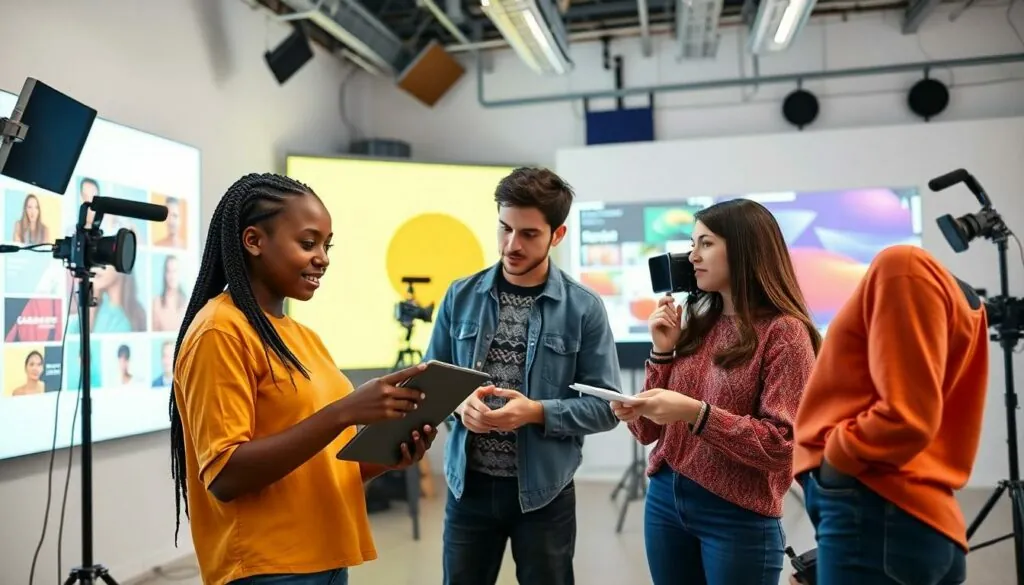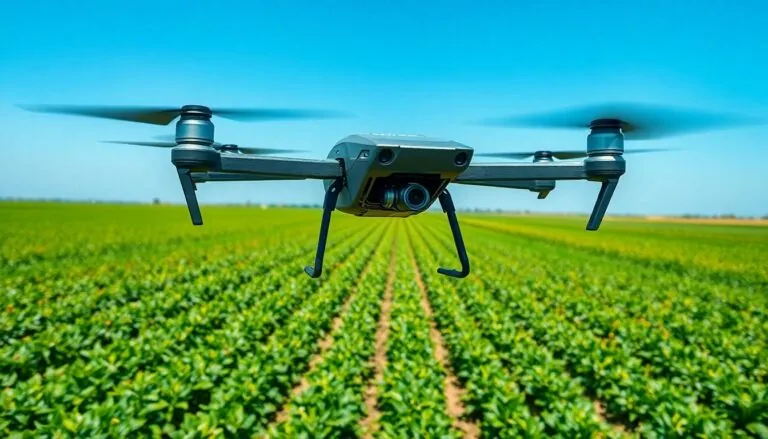Table of Contents
ToggleIn a world where scrolling through endless feeds is the norm, the intersection of arts, audio/visual technology, and communications has never been more vital. Imagine a realm where creativity meets cutting-edge tech, transforming mundane messages into captivating experiences. It’s not just about pretty pictures or catchy tunes; it’s about crafting connections that resonate.
Overview of Arts, Audio/Visual Technology, and Communications
Arts, audio/visual technology, and communications blend creativity with innovation in today’s digital landscape. This intersection holds immense potential for transforming traditional forms of expression into captivating experiences.
Technological advancements, such as virtual reality, enhance storytelling, making it immersive and interactive. Their integration fosters communication by allowing audiences to engage with content on a deeper level. Presence in multimedia platforms adds immediacy to messages, connecting creators with viewers instantaneously.
Artistic practices benefit significantly from audio/visual tools. Filmmaking utilizes high-definition cameras and editing software, while graphic design incorporates computer-generated imagery. These enhancements produce professional-grade work that captures attention and resonates emotionally.
Effective communications against this backdrop prioritize clarity and innovation. Strategies utilizing social media, podcasts, and video marketing make messages more accessible and engaging. Businesses leverage these tools to build brand identity and connect with diverse audiences.
Collaboration among artists, technologists, and communicators creates richer narratives. Joint projects result in unique outputs that challenge conventional boundaries. This cross-disciplinary approach not only broadens perspectives but enriches cultural relevance, influencing societal trends and discussions.
Finally, education in these fields emphasizes hands-on experience with cutting-edge tools. Institutions offer programs focused on integrating arts and technology, preparing students for dynamic career paths. Graduates emerge equipped to navigate an evolving marketplace, dedicated to pioneering new forms of communication.
Importance of Arts in Communication

Arts play a crucial role in effective communication, enhancing connection and engagement. They transform simple messages into powerful narratives that resonate with audiences.
Role of Art in Storytelling
Storytelling thrives on artistic expression. Artists use diverse mediums to convey emotions, drive plots, and connect with audiences deeply. Whether through visual art, performance, or multimedia presentations, each form adds layers to narratives. This multi-faceted approach captivates viewers and encourages them to explore themes, characters, and messages in enriching ways. Engagement increases as participants become emotionally invested, resulting in memorable experiences.
Influence of Visual Arts on Perception
Visual arts significantly shape perception. They communicate complex ideas quickly and effectively, facilitating rapid understanding. Colors, shapes, and imagery evoke emotions and influence moods, guiding audience reactions toward intended messages. Effective visual designs attract attention, drawing viewers in and creating lasting impressions. From advertisements to social media posts, compelling visuals can enhance brand identity and strengthen connections with audiences. Visual elements serve as immediate communication tools, bridging gaps between cultures and languages.
Evolution of Audio/Visual Technology
Audio/visual technology has undergone significant transformation, reshaping how artistic expressions engage audiences. The progression from early inventions to today’s sophisticated tools reflects advancements in creativity and communication.
Historical Development
Early audio/visual technology roots trace back to the invention of the phonograph in 1877 and the motion picture camera in the late 1890s. These pioneering devices laid the groundwork for sound and visual storytelling. The introduction of television in the 1920s expanded the reach of audiovisual content, making it accessible to a broader audience. Subsequent innovations such as VHS and DVDs revolutionized media consumption. By the 2000s, the rise of digital technology marked another pivotal moment. The transition from analog to digital formats enhanced quality, allowing for more intricate productions.
Current Trends in Technology
Today, trends in audio/visual technology dominate the marketplace, influencing various fields. Virtual and augmented reality create immersive experiences that draw audiences closer to narratives. Streaming services leverage high-speed internet to provide on-demand content, challenging traditional media consumption patterns. Advanced editing software enables content creators to produce professional-quality work with relative ease. Artificial intelligence increasingly personalizes user experiences, offering tailored recommendations. Mobile devices facilitate the dissemination of audiovisual media, ensuring content is accessible anytime, anywhere. These developments emphasize the importance of innovation in communications and the arts.
Impact on Modern Communication
Modern communication is significantly shaped by the intersection of arts, audio/visual technology, and innovative practices. This dynamic influences how messages resonate and engage with audiences across multiple platforms.
Social Media and Multimedia Art
Social media transforms how artists share their work and connect with global audiences. Platforms like Instagram and TikTok allow creators to showcase multimedia art, blending visuals, audio, and narrative. Viral trends in these spaces often spark creativity, prompting artists to experiment with new forms. User-generated content encourages collaboration, leading to unique artistic expressions that challenge traditional boundaries. Engagement metrics drive artists to create captivating content, enhancing their visibility and relevance in the digital sphere.
Integration of Technology in Artistic Expression
Technology plays a crucial role in modern artistic expression. Artists now utilize digital tools to explore innovative techniques, expanding their creative possibilities. Software applications for graphic design and video editing offer unprecedented capabilities, resulting in high-quality visuals that captivate viewers. Technology also facilitates immersive experiences through virtual and augmented reality, allowing audiences to engage with art in new ways. Collaboration among artists and technologists fosters inventive approaches, pushing the limits of how art communicates complex ideas and emotions.
Challenges and Future Directions
Contemporary challenges in arts, audio/visual technology, and communications emphasize the need for ethical frameworks and innovative approaches.
Ethical Considerations
Ethical considerations play a vital role in shaping artistic expression and communication in the digital age. Artists frequently face dilemmas surrounding copyright, intellectual property, and the use of personal data. Transparency in data collection ensures audience trust, while respecting cultural sensitivities enhances inclusivity. Furthermore, content creators must navigate the fine line between artistic freedom and the responsibility to avoid perpetuating stereotypes or misinformation. Engaging in critical discussions about these ethical issues fosters a responsible creative environment, empowering artists and communicators to produce work that reflects integrity and social awareness.
Emerging Technologies in Arts and Communication
Emerging technologies significantly impact the evolving landscape of arts and communication. Virtual reality and augmented reality offer immersive experiences that enhance storytelling and audience engagement. Additionally, blockchain technology enables secure transactions for digital art, providing artists with new revenue streams. Social media platforms continue to evolve, allowing diverse forms of multimedia expression, which fosters global connections. Artificial intelligence tools also aid creators in personalizing content, optimizing engagement, and streamlining the creative process. Adopting these technologies positions artists and communicators at the forefront of innovation, ensuring dynamic interactions with audiences.
The fusion of arts, audio/visual technology, and communications is reshaping how creators engage with audiences. By leveraging innovative tools and platforms, artists can craft experiences that resonate on a deeper level. This evolution not only enhances storytelling but also fosters meaningful connections that transcend traditional boundaries.
As technology continues to advance, the potential for collaboration among artists and technologists will only grow. Embracing this intersection opens doors to new narratives and artistic expressions that challenge the status quo. It’s essential for creators to navigate ethical considerations while pushing the limits of their craft, ensuring that their work reflects both integrity and creativity in this dynamic landscape. The future of communication in the arts is bright and full of possibilities.




